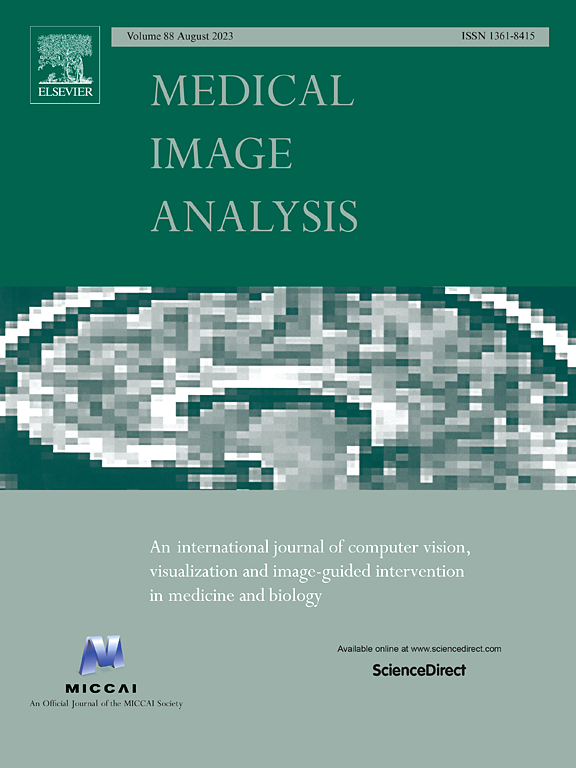Imaging the structural connectome with hybrid MRI-microscopy tractography
IF 10.7
1区 医学
Q1 COMPUTER SCIENCE, ARTIFICIAL INTELLIGENCE
引用次数: 0
Abstract
Mapping how neurons are structurally wired into whole-brain networks can be challenging, particularly in larger brains where 3D microscopy is not available. Multi-modal datasets combining MRI and microscopy provide a solution, where high resolution but 2D microscopy can be complemented by whole-brain but lowresolution MRI. However, there lacks unified approaches to integrate and jointly analyse these multi-modal data in an insightful way. To address this gap, we introduce a data-fusion method for hybrid MRI-microscopy fibre orientation and connectome reconstruction. Specifically, we complement precise “in-plane” orientations from microscopy with “through-plane” information from MRI to construct 3D hybrid fibre orientations at resolutions far exceeding that of MRI whilst preserving microscopy's myelin specificity, resulting in superior fibre tracking. Our method is openly available, can be deployed on standard 2D microscopy, including different microscopy contrasts, and is species agnostic, facilitating neuroanatomical investigation in both animal models and human brains.

用混合核磁共振成像-显微牵引成像技术成像结构连接体
本文章由计算机程序翻译,如有差异,请以英文原文为准。
求助全文
约1分钟内获得全文
求助全文
来源期刊

Medical image analysis
工程技术-工程:生物医学
CiteScore
22.10
自引率
6.40%
发文量
309
审稿时长
6.6 months
期刊介绍:
Medical Image Analysis serves as a platform for sharing new research findings in the realm of medical and biological image analysis, with a focus on applications of computer vision, virtual reality, and robotics to biomedical imaging challenges. The journal prioritizes the publication of high-quality, original papers contributing to the fundamental science of processing, analyzing, and utilizing medical and biological images. It welcomes approaches utilizing biomedical image datasets across all spatial scales, from molecular/cellular imaging to tissue/organ imaging.
 求助内容:
求助内容: 应助结果提醒方式:
应助结果提醒方式:


